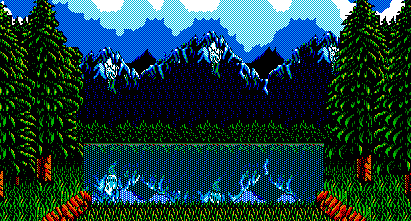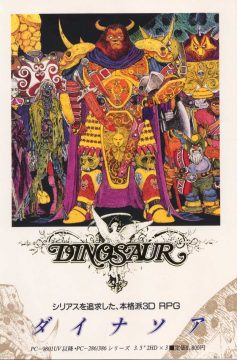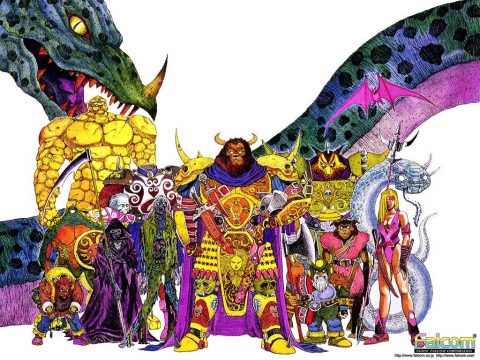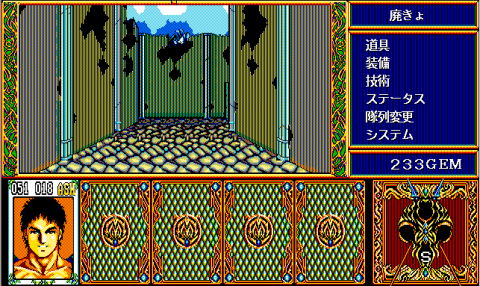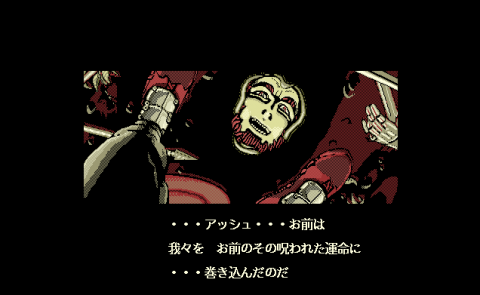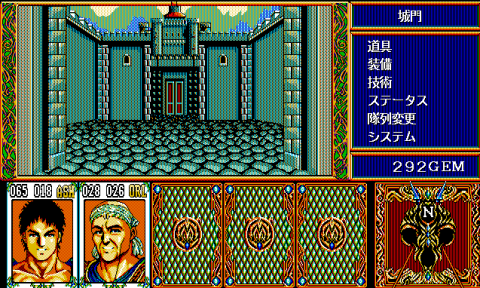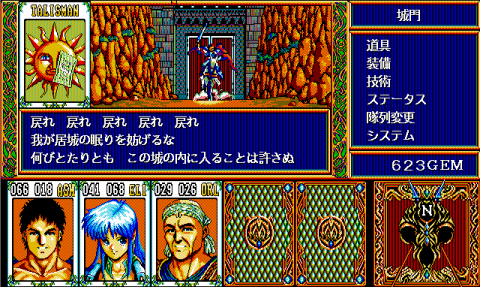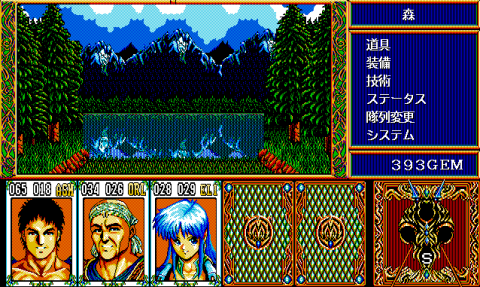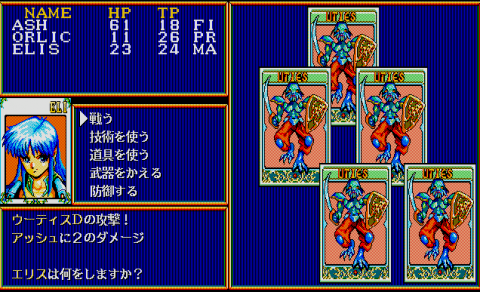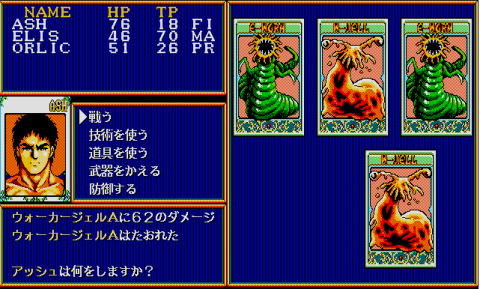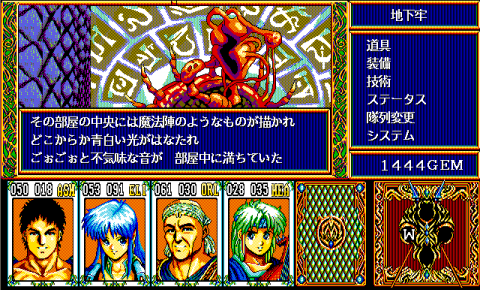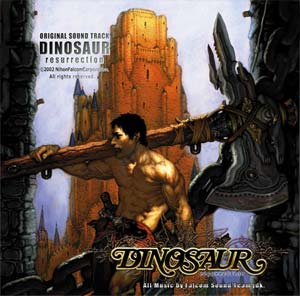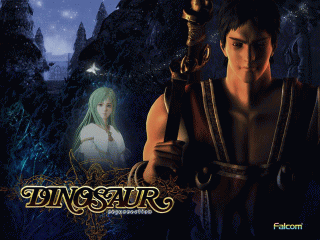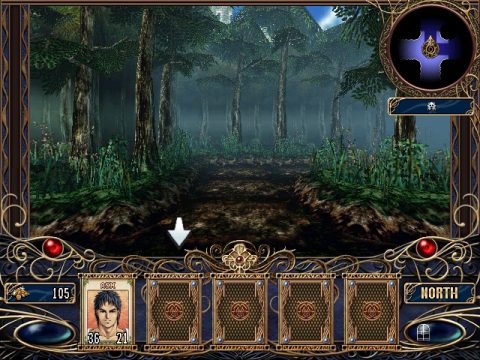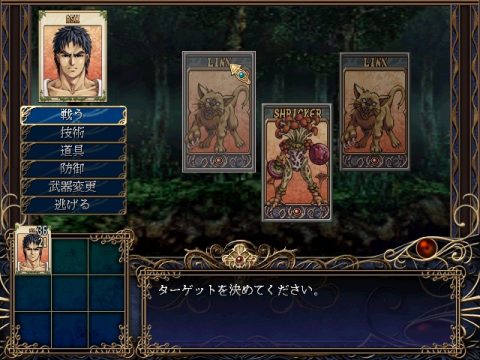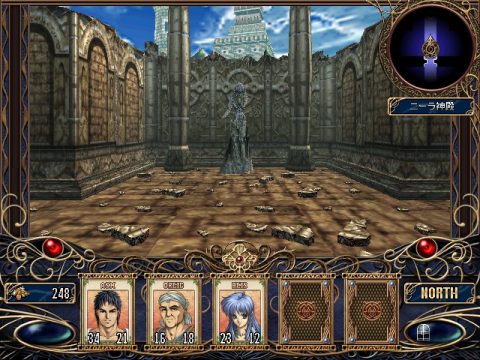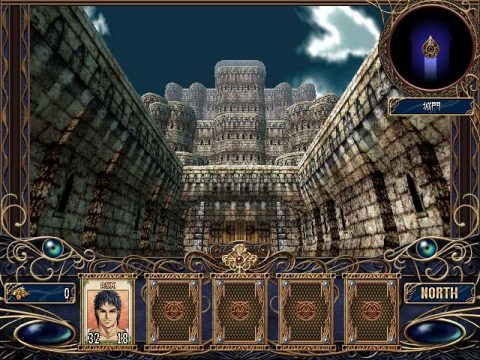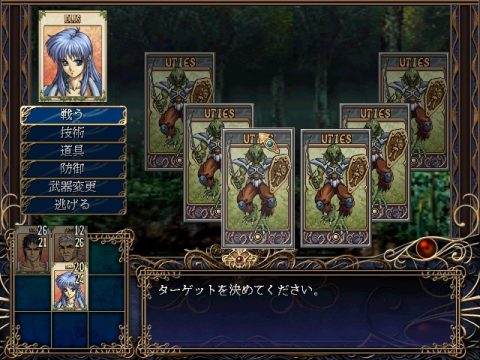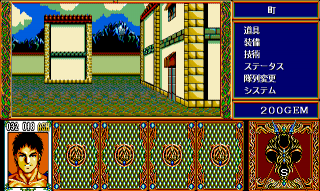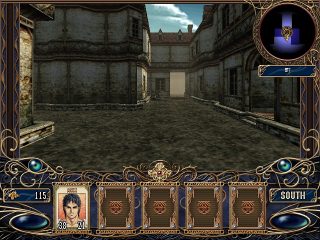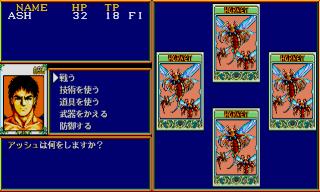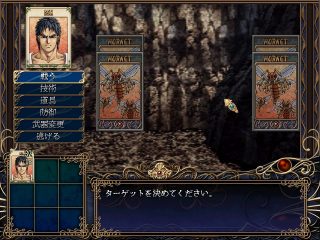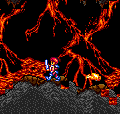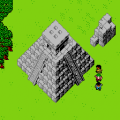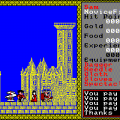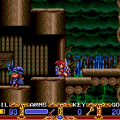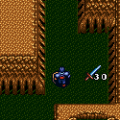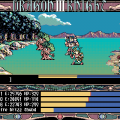There are no dinosaurs in Dinosaur, a dungeon crawling RPG released by Falcom in the late 80s. The final boss is named Dinosaur – why, it’s not entirely clear. The title sounds silly to native English speakers, but the game’s claim to fame among Japanese gamers is that it’s a dark and serious game, a contrast to the lighter, anime-style games that Falcom was typically known for. The game was directed by Kazunari Tomi, who created the first two Mugen no Shinzou games for Xtalsoft several years before, and previously worked on Sorcerian and Star Trader for Falcom. After Dinosaur was published, he founded Studio Alex and worked with Game Arts on the two Lunar games for the Sega CD.
A more appropriate (if uninventive) name for Dinosaur would be “Falcom Does Wizardry“. In the early ages of computer gaming, the Japan had quite a thing for Western-designed first person RPGs like Might & Magic and Dungeon Master. Wizardry was one of the most popular, to the point where it received many console ports (which were never released in their home country of America) as well as its own anime. Yet, outside of these and Namco’s/Atlus’ Megami Tensei series, games of this persuasion were relatively rare from Japanese developers, who seemed to prefer Dragon Quest clones. So this game is Falcom bucking their own trends in more than one way.
According to Falcom’s webpage, this is the story of Ash, the hero:
Ash is the legendary mercenary who is said to return from any battle alive while his allies are defeated. But in this age of peace there is no battlefield for him. Yearning for conflict he is seemingly guided by a white butterfly to Zamhan…a crawling world, in which tragedy gives birth to madness and disorder in the space between life and death, and endless resentment can become the irrelevant words of a distant age. All it can offer is chaos, and then destruction.
Ash, it seems, is constantly haunted by the ghosts of friends and foes alike, including one female spirit. In his dreams, they gather around him and call him “Grim Reaper Ash”. Once you reach Zamhan, it’s your pretty typical quest – talk to the mayor and run some quests, follow more butterflies, and discover the reason why you’ve been summoned to this land. Each of the main cast members has their own reasons for being summoned to this dark world as well.
You end up in the first town well equipped (a rarity in Falcom games) and ready for adventure. There’s very little atypical about the first person exploration – all of the movement is comprised of static screens with a little shuffling sound effect. Oddly enough, the view distance is limited in the town but is barely an issue when you start exploring mountains, forests, castles, shrines, and all of the usual fantasy locales. There’s no real automapping function, only a consumable magic item that will show a snapshot of the immediate surroundings. If you want a complete map, you’re going to need to make your own (or look up them up online.) Unlike some older RPGs like Wizardry, there’s absolutely no character creation, and fellow adventurers join you as you run into them.
Thankfully, other parts of the game are far more user friendly. Borrowing from Falcom’s Brandish, when you’re walking around, you can press the action button to rest, which restores a small amount of health and technique points. This practically eliminates the need to return to town to rest, and lets you save your healing items for the fury of battle. However, there’s still a chance that you’ll be surprised by enemies if you’re resting, though the chance is lower if you’re surrounded by walls.
Speaking fighting, the battle system is also extraordinarily fast. When you’re walking along, you’ll be alarmed with a polite message that reads “COMBAT”, then whisked away to a completely separate screen. All of the enemies are represented by cards on the right side of the screen. From here, you can issue your orders, like any other RPG. You can also position your characters in front, middle, and back rows to change their offense/defense statistics, plus each colored jewel indicates their affinity.
Each of your characters has a set class, and their unique attacks are determined by whatever weapon they have equipped. You tell them to attack, and there’s no animation, and only a tiny click of a sound effect. The status window tells you how much damage you’ve dealt or received, and if you’ve turned up the text speed, it shows up instantly. This means that battles can be over in a matter of seconds. Which is quite welcome, because the random encounter rate is set pretty high. On the negative side, it’s rare that you need to put much effort into combat. Even many boss battles can be won in under five seconds by just hitting “Fight” over and over, presuming you’re well-leveled.
There’s also a character ability stat, separate from your character’s main level. This is increased by doing specific actions over and over again – for example, using a sword will improve the sword skill, using magic will increase magic, and so forth. Additionally, once certain characters reach high enough stats, they become an apprentice and learn some skills from stronger characters. For example, once he’s leveled up the skill enough, Ash can teach sword skills to a character like Heath, once their STR value has reached 20. It’s a way of multi-classing, though even which characters can learn which skills are still set in stone, as not all skills can be transferred to everyone, and they typically won’t be as powerful when used by the apprentice anyway.
Despite how intrusive the battles can be, they still feel less tedious than most RPGs of the day, which makes it remarkably playable even now. There’s also a lot to see and do, especially since there are two whole scenarios, which have different plotlines, dialogue, and features different characters (or introduces them in different order). But, like most Falcom games, the real draw of Dinosaur is its soundtrack. While it’s certainly not the best they’ve ever done – it’s still trumped by Ys and Legend of Xanadu – many of the songs are catchy and some manage to be surprisingly badass, relying heavily on a distorted guitar sound. On the other hand, much of the exploration music is pretty low key and therefore uninteresting, but there are still plenty of gems, especially the booming intro theme.
Dinosaur Resurrection (ダイナソア リザレクション) – Windows (2002)
Like most Falcom games, Dinosaur received an overhaul for Microsoft Windows and released in 2002. Dinosaur Resurrection is more or less the same game, but with drastically improved graphics, an improved interface, and other additions. The entire game is now in 3D, complete with smooth scrolling, although the movement is still entirely grid based. The repetitive textures do a good job of emulating the look and feel of the older games while still seeming modern, even if it still pales compared to your typical first person shooter. A mini-map on the corner of the screen will show you the immediate surroundings, and the Search spell opens up a much larger automap that stays onscreen until you’re attacked.
The entire soundtrack has been remixed, though some songs fare better than others – the battle songs are backed by a distorted guitar, while the exploration themes benefit from the added instrumentation, but some of the slower, darker pieces sounded better with the haunting FM of the original version. There’s also a whole new rendered intro which, despite not being terribly interesting ends up pretty cool combined with the music.
You can move with either the keyboard or point with the mouse. Combat works much the same way as the original, except it’s entirely mouse driven. Just click on a bad guy and you’ll fight them – despite some added animations, it still moves lightning fast, and the game even autotargets your next foe, so battles can still be won by repeatedly clicking. Using items, executing special attacks, equipping weapons and buying items is also made much easier thanks to the improved interface.
There’s some rebalancing, as characters don’t level up quite as quickly, and boss battles are somewhat harder. A few new skills types have been added – the original had Sword, Magic, Priest Magic, Song, and Fighting, while the remake adds Bow and Trap skills. The random encounter rate has been dropped, although they still occur frequently. While some prefer the retro aesthetics of the original (particularly the music), Dinosaur Resurrection is so successful in updating the formula that it otherwise makes the original game obsolete.
Although Dinosaur will still appear ancient to those not accustomed to this style of game, it’s definitely the way to go for fans of the genre, especially since they don’t make games like this at all anymore. The closest successor might be Arcana, a similar game that was released on the SNES.
Thanks to Kyouki for the translation of Falcom’s webpage.
Links:
Falcom Game Encyclopedia – Dinosaur Tons of information and a complete walkthrough with maps and the whole script (archived in the Wayback Machine).
Dinosaur Conquest Guide Another walkthrough with maps.
Falcom – Dinosaur Resurrection Official web site.
